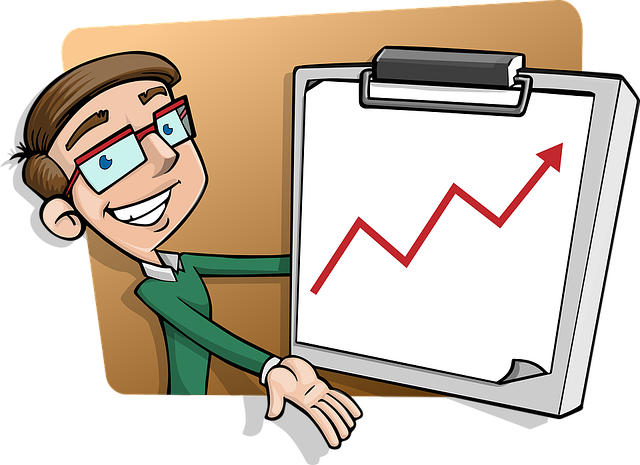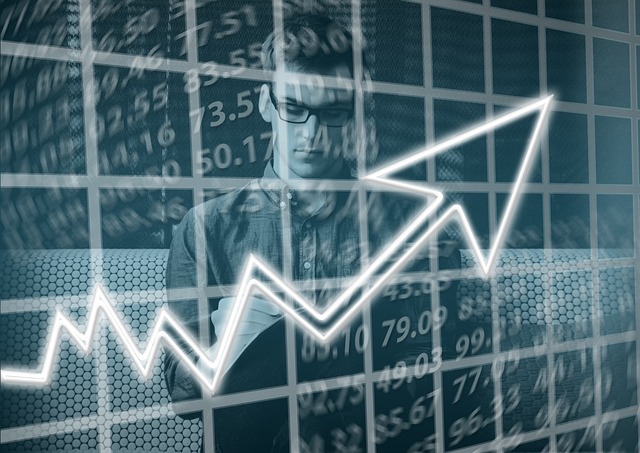The economic cycle is important for determining the long-term growth of the economy. This cycle is affected by the sales of gross domestic product (GDP) as they move up and down. The GDP is a measurement of the value of goods and services. This information can be used to determine the overall wealth of a nation’s economy. Keeping track of the economic cycle and its stages are very important, especially for business owners. This information helps them make informed decisions based on whether the economy is contracting or expanding. It can also help investors make decisions on when the best time to invest is.
The economic cycle will go through several stages. Today, we’re going to discuss the different stages the economy goes through. We’ll also talk about how they are significant to businesses and investors. Read on to learn more.
The 4 Stages of the Economic Cycle
The economic cycle has 4 stages that it can go through, otherwise known as the business cycle:
- Expansion
- Peak
- Contraction
- Trough
These are the stages that every economy goes through. Ideally, every economy wants to go through expansion and peak cycles. While contraction and trough are not times people look forward to, even the wealthiest economies will hit these stages at some point.
The thing about these stages is that they don’t have a schedule or a time limit. Experts can predict the stages before they occur to help people make informed choices. However, there is no set period on how long an economy will go through a specific stage.
Let’s take a closer look at each of these stages so you can get a better idea of what each of these stages means for the economy.
Expansion
During this stage, the economy is growing. GDP revenue is increasing, businesses are seeing higher profits, and unemployment rates are low. There are a few key things that can contribute to an economy’s growth.
- Employment rates & wages
- Corporate profits vs output
- Supply of goods and quality of services
- Consumer demand
When the economy is going through the expansion phase, there is a steady flow of money. This leads to the interest rates becoming lower and money becoming all around cheaper.
Peak
Unfortunately, the economy won’t stay in the expansion stage forever. Eventually, it will reach the peak stage. This is when the GDP has hit maximum growth. During this time, GDP will have stable rates.
The downfall of the peak stage is that it leads to imbalances in the economy. Business owners and CEOs will need to be strategic during this period to plan their next moves. This is because the peak stage is only brief. It eventually leads to the contraction phase, which every business will need to be prepared for.
Contraction
The contraction stage is when the economy goes into recession. Demands for goods and services begin to decrease. Some businesses may need to make cutbacks, causing the unemployment rate to begin to increase. Other businesses may have a surplus in products without the demand. This can lead to rates being cut and profits dropping.
A shrinking economy can also cause price increases on essential items, such as fuel and groceries. Businesses get hurt by this because consumers begin to spend less money.
This can be a tricky stage to navigate without a business plan. Companies that were on an upward trend during the expansion stage become at risk of going into debt or closing down. A contraction stage that lasts for a long period of time could lead to an economic depression.
Trough
Similar to the peak, there is also the trough. This is when the economy has hit its lowest point before it reaches the expansion stage again. Before the economy can begin to bounce back to a healthy growth rate, things will feel like they are at an all-time low.
There will be fewer jobs available, goods and services will be at a bare minimum, and many households and businesses will be scraping by. The good thing about the trough stage is that it leads to recovery.
What Is Economic Recovery?
Technically, there are only 4 stages of recovery. However, experts often view economic recovery as a stage of its own. This is when the economy shifts from its low point to growing at a steady rate again. Businesses and investors can benefit from creating a plan for this bounce-back period.

During the economic recovery, there will be new conditions. A plan will be needed so investors, CEOs, and business owners can prepare for the new adjustments. Adapting to these new circumstances is important for seeing a healthy growth rate during the expansion stage.
The government, banks, and other public services will have a new set of rules and regulations. These are in response to the contraction stage. Resources will begin to surface to help new businesses flourish and create employment opportunities.
Do Online Businesses Help the Economy Grow?
Shopping locally is a great way to help the economy grow. However, it’s not the only way. Studies have shown that online businesses also play a significant role in boosting the modern economy.
The internet creates a lot of opportunities for sellers to expand their business. There are many forms of marketing that can help them reach a new and larger customer base. This allows them to focus on creating a great customer experience.

Since opportunities in the e-commerce industry are unlimited, it has given people who had their employment status affected by the recession a new way to find opportunities to earn an income. It also gives established businesses that sell products a way to reach new customers.
Let’s take a closer look at some of the pros and cons of online businesses and their effects on the economy.
| Pros | Cons |
| Creates opportunities for businesses and B2C sellers. | Less interest in local businesses that don’t have a presence online. |
| High productivity. | Customers are savvier, creating challenges for local businesses. They are less likely to pay full price at a retail store for items they can find discounted online. |
| More jobs are created in the packing, shipping, and delivery industries. | Local businesses face challenges finding workers as more opportunities to make an income online arise. |
| No geographical or time limits (customers can make a purchase any time from nearly any location). | Independent sellers and services aren’t guaranteed an income. This could result in a lot of time and effort before an income is generated. |
| Creates work-from-home opportunities where people have more control over their income. |
Closer Look at an Online Business
To give you a better idea of how an online business can boost the economy, we want to share an example. One industry that’s taking off online is the gaming industry. There are several legitimate online platforms that actually contribute to the growth of the economy.
The top sites in the UK make billions of pounds each year. All of this money is taxable, meaning that it goes back to government-funded services that benefit the community. Even during the economy’s lowest points are still able to contribute to growth.
So, if you enjoy playing games at online sites no deposit, taking your shot at winning money is actually helping the economy grow. This is how it works:
- Some sites keeps a small percentage of every dollar spent on the game. The rest is put in a pool to be given back as prize money randomly to people playing the game.
- The online uses profits to pay for operations, employee wages (such as web designers, gaming developers, online dealers, and more), and taxes.
Conclusion
The economy has four stages that it goes through during a cycle. Each of these stages is significant for reaching the peak again. While a recession typically isn’t good news. However, this allows investors and business owners to learn and adapt to new procedures. No rules state how long an economy will stay in a specific stage. Investors and business owners that make a plan for each location are more likely to see their business survive during the contraction and trough stages.



